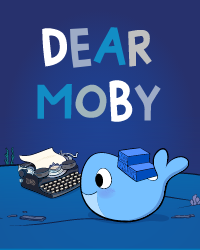Key Insights from Stack Overflow’s 2022 Developer Survey
Continually taking the pulse of the development community is key to understanding development trends. Less than a week ago, Stack Overflow published the results of its 2022 Developer Survey. We eagerly reviewed these findings to discover how tech trends have changed over the past year.
While a lot of the players in the top 10 spots have remained consistent from last year, some trends spoke volumes. It’s clear that application development demands flexibility, agility, and tools that let you bring your own tech stack. Here’s why.
No Single Language Rules Them All
Nothing is certain but death, taxes…and JavaScript. The language has claimed the top spot among popular programming, scripting, and markup languages for the 10th year running. There’s also similar stability near the top of the rankings — where the usual suspects like HTML/CSS, SQL, and Python reign supreme. We’ve discussed the leaders, but what about the remaining languages?
2022’s top languages. Data courtesy of Stack Overflow.
Overall, the sheer variety of languages used has grown substantially in the past five years. While Stack Overflow tracked the popularity of 25 different technologies in 2017, this year’s most popular technologies list featured 42!
Given that hundreds of programming languages alone exist today — with roughly 50 considered “most popular” overall — it’s interesting to see such representation. There’s truly something out there for every imaginable use case. We love variety because it encourages innovation. However, it’s also worth noting that variety can represent added complexity for developers.
Diversity in Databases and Frameworks
Similar things can be said for databases and web frameworks, where no single technology claims 50% or greater usage. Developers demand flexible tools that let them innovate, since so many technologies are highly popular:
2022’s top database technologies. Data courtesy of Stack Overflow.
2022’s top web frameworks and technologies. Data courtesy of Stack Overflow.
Stack’s findings also underscore a key element of current development. Developers are using innumerable combinations of languages, frameworks, tools — and even OSes — during the development lifecycle. There’s no widespread consensus across these categories. Tech stacks are also increasingly use case driven, and not the other way around. Developers are also trying to reach even wider audiences.
The growing complexities stemming from these trends are major paint points. Therefore, having a consistent environment where you can universally build and deploy with any of your preferred technologies is incredibly valuable.
Cross-Platform Development Is Essential
Even if Windows holds the majority in personal use, there’s no clear OS winner. Developers are creating applications across a wide variety of platforms, which means that a consistent environment must be able to build and package cross-platform applications.
Our users have shared that tools like Docker Desktop, Docker Hub, and others have noticeably simplified and accelerated their cross platform development projects. It’s much easier to package all application code, dependencies, and essential components together when deploying atop varied operating systems and CPU architectures.
For experienced developers and even container newcomers, Docker CLI commands are both plentiful and usable. Alternatively, you can start, stop, and manage your containers using Docker Desktop’s Dashboard UI. Volume management and image management options are also included. Our goal is to equip all developers with the tools they need to get more done, faster — while enjoying themselves in the process.
Containers Are Going Strong
Gartner believes that 70% of organizations will be running multiple containerized apps by 2023. Momentum has definitely grown, and it’s led us to some very humbling discoveries in 2022: Docker is the #1 most loved development tool, and remains the #1 most-wanted tool.
Data courtesy of Stack Overflow.
Data courtesy of Stack Overflow.
Over 75% of devs who’ve regularly used Docker in the past year want to keep using it. More developers (37% vs. 30% in 2021) who haven’t yet used Docker are now interested. Additionally, professional developers currently view Docker as the most fundamental tool, jumping 14 percentage points since last year.
First and foremost, this couldn’t have been possible without countless contributions from our developer community. Your continual feedback across all of our products and tools has helped drive development forward — and improve developer experiences. Most new features have stemmed directly from community engagement and contributions to our public roadmap. Your collective input has been so impactful.
We also know how increasingly saturated the tooling market is becoming every day, which makes us feel even luckier to have a strong following. Thank you so much for your support, and for letting us streamline your critical daily workflows! If you’re considering using Docker for the first time, check out our Orientation documentation and Shy Ruparel’s “Getting Started with Docker” workshop:
Developers Value Flexibility, Ease, and Stability
We’ve noticed some main themes from Stack Overflow’s 2022 Developer Survey. Firstly, there’s a massive variety of technologies currently used across the industry. Second, developers are using these technologies both because they’re essential and because they love them so much. Third, containers are becoming even more popular as teams better understand their benefits.
Docker maintains a number of tools that make development easier. Beyond our container technology, each tool supports rapid development and deployment across highly-diverse environments. You can harness your favorite tech stack without encountering hiccups.
We think this can benefit millions upon millions of developers, and we couldn’t be happier that you agree. And if you haven’t given Docker a try, remember to download Docker Desktop. Here’s looking forward to another successful year!
Hungry for more data? You can view Stack Overflow’s complete survey results here, or read the official summary here.
Quelle: https://blog.docker.com/feed/







